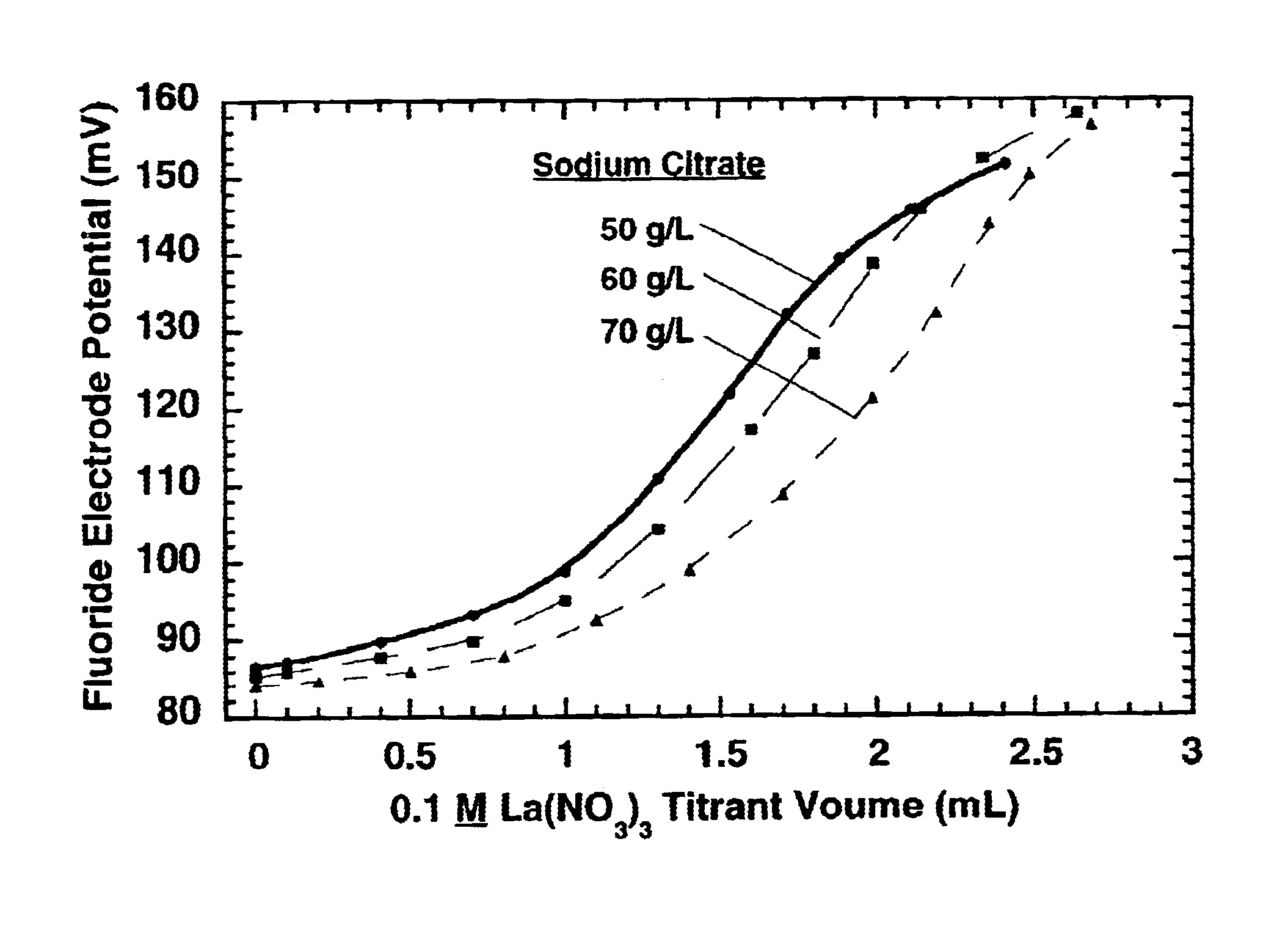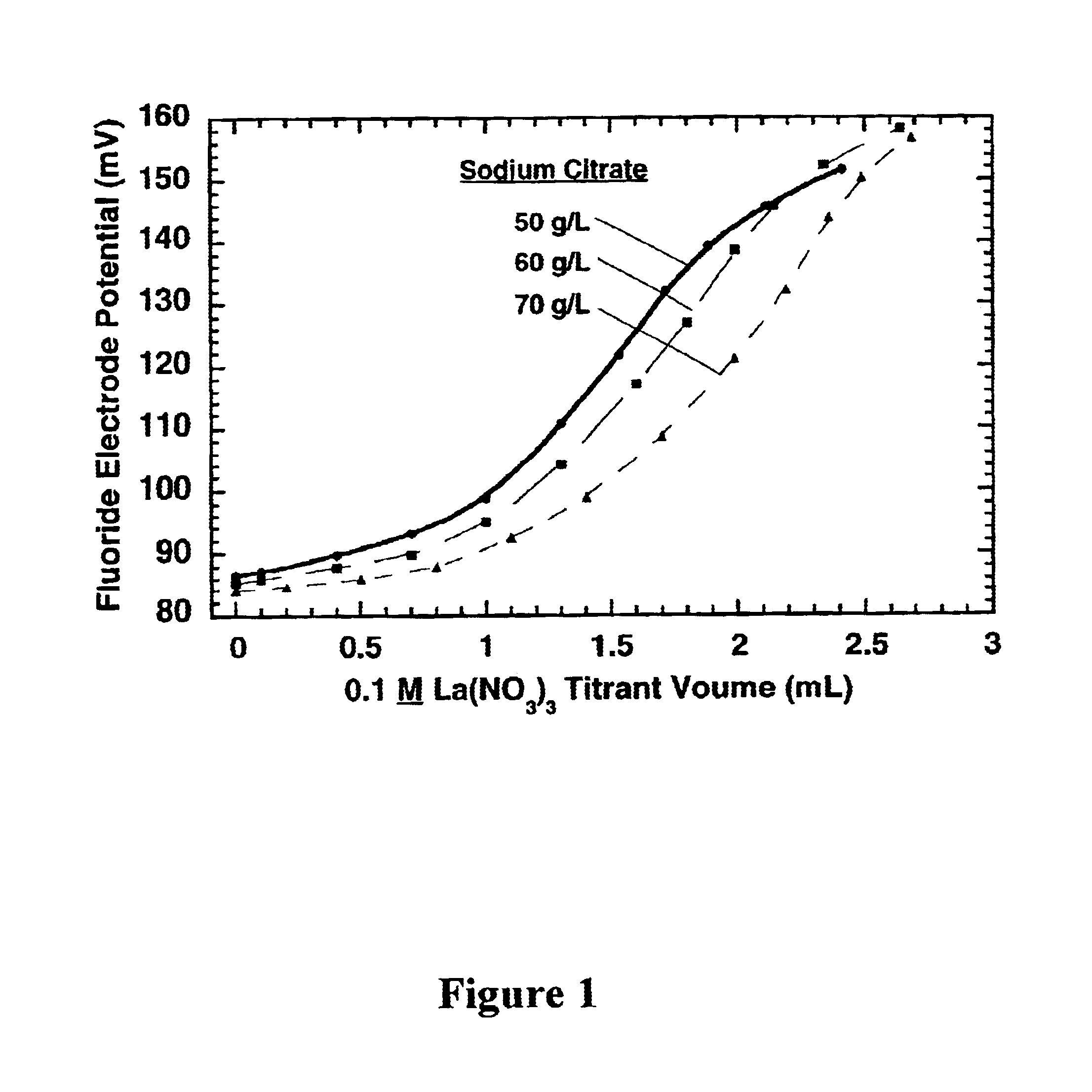Measurement of complexing agent concentration in an electroless plating bath
a technology of complexing agents and electroless plating baths, which is applied in the direction of material electrochemical variables, instruments, and phase/state change investigations, can solve the problems of complex measurement of complexing agents in electroless plating baths, reducing the overall resistance of circuit traces, and reducing the conductivity of barrier layers, so as to minimize measurement errors and facilitate rinsing
- Summary
- Abstract
- Description
- Claims
- Application Information
AI Technical Summary
Benefits of technology
Problems solved by technology
Method used
Image
Examples
Embodiment Construction
[0021]Technical terms used in this document are generally known to those skilled in the art. A “titration” to determine the concentration of an “analyte” species in a test solution involves standard additions (to the test solution) of a titrant solution containing a predetermined (known) concentration of a “titrant” species, which reacts with the analyte species. The concentration of the analyte is determined from the volume of the titrant solution required to reach the “equivalence point” for the titration, which corresponds to substantially complete consumption of the analyte in the test solution by reaction with the titrant. Ideally, the equivalence point is the “endpoint” for the titration but in practice an appreciable excess of titrant may be required to produce a detectible endpoint effect. The term “standard addition” generally means addition of a known volume of a first solution to a known volume of a second solution, and the “volume ratio” is the volume of the first soluti...
PUM
| Property | Measurement | Unit |
|---|---|---|
| concentration | aaaaa | aaaaa |
| concentration | aaaaa | aaaaa |
| pH | aaaaa | aaaaa |
Abstract
Description
Claims
Application Information
 Login to View More
Login to View More - R&D
- Intellectual Property
- Life Sciences
- Materials
- Tech Scout
- Unparalleled Data Quality
- Higher Quality Content
- 60% Fewer Hallucinations
Browse by: Latest US Patents, China's latest patents, Technical Efficacy Thesaurus, Application Domain, Technology Topic, Popular Technical Reports.
© 2025 PatSnap. All rights reserved.Legal|Privacy policy|Modern Slavery Act Transparency Statement|Sitemap|About US| Contact US: help@patsnap.com


